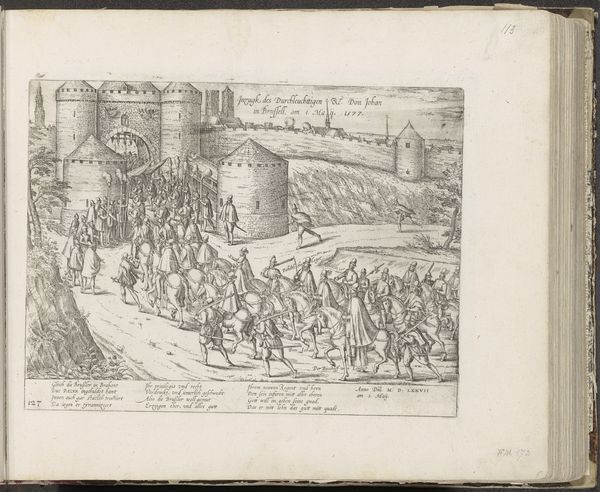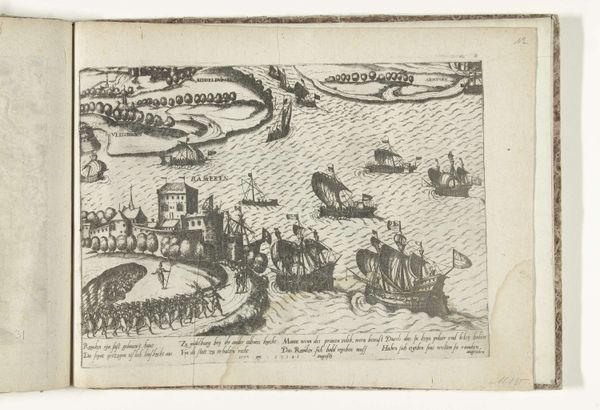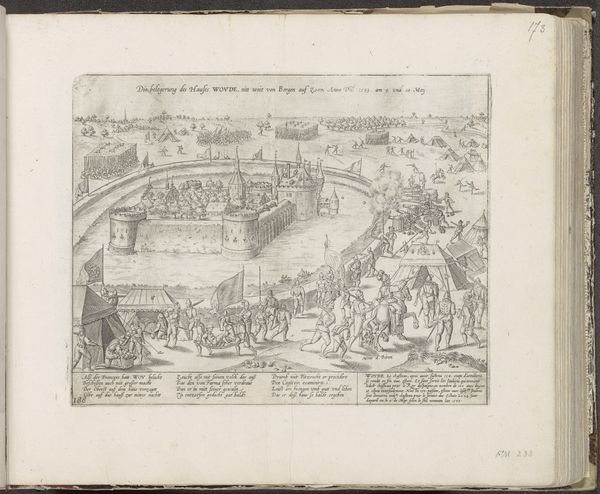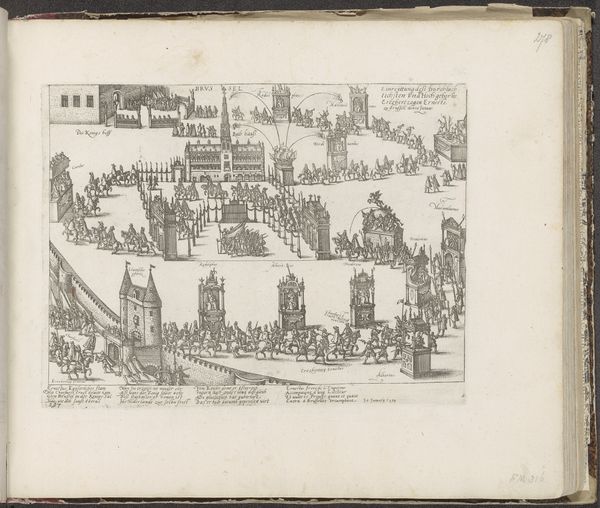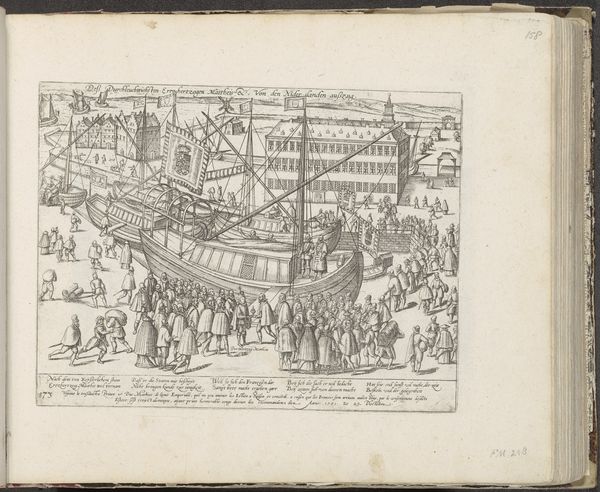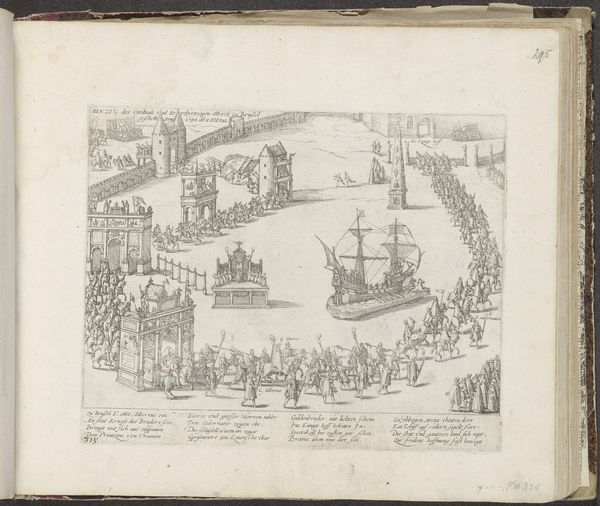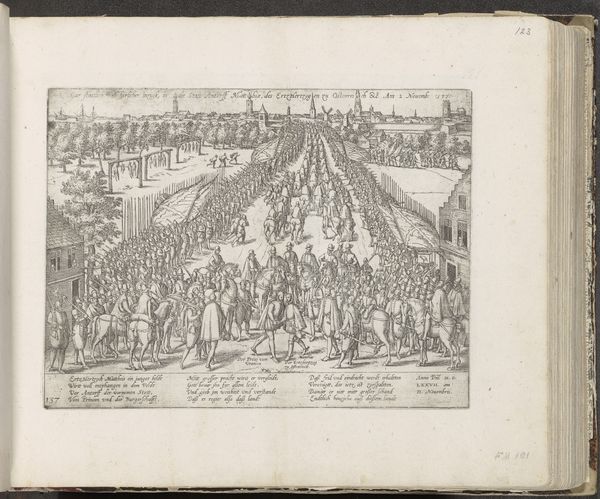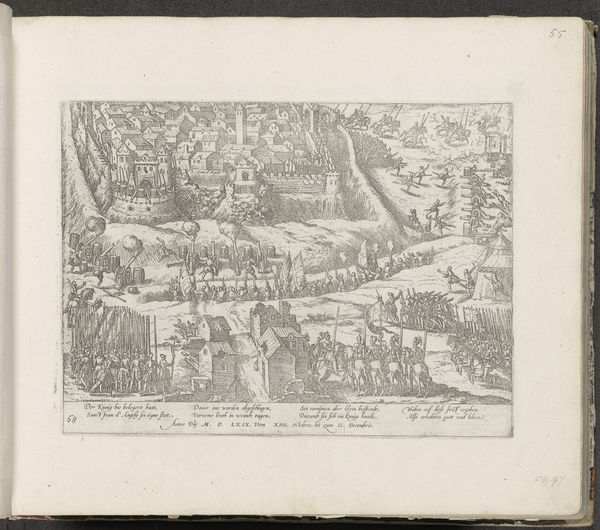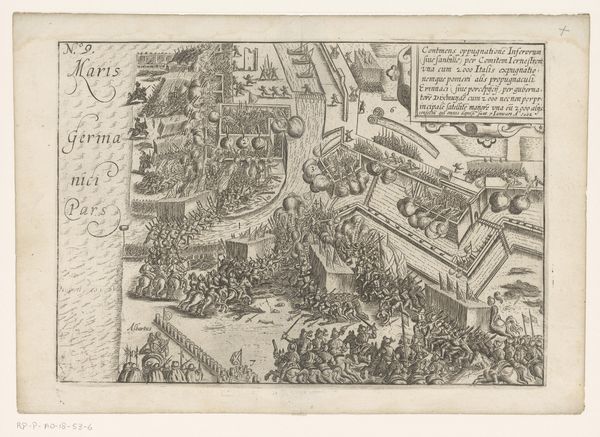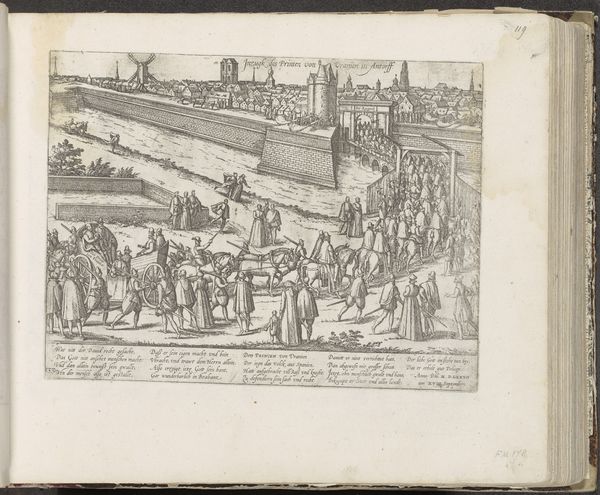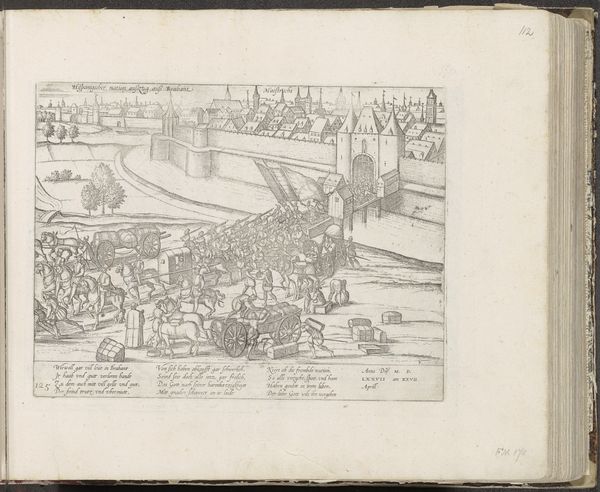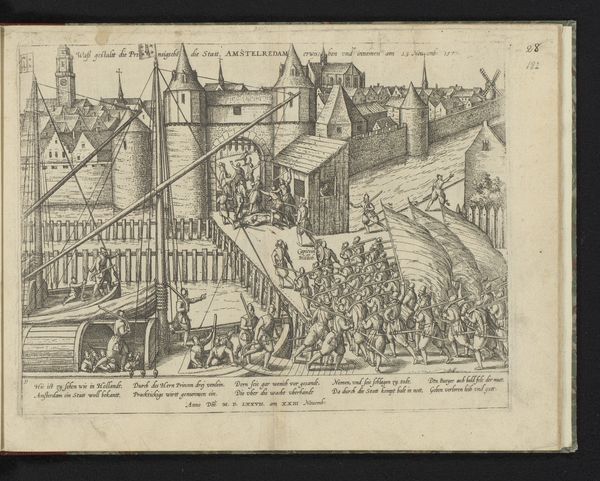
print, engraving
#
medieval
# print
#
cityscape
#
history-painting
#
engraving
Dimensions: height 212 mm, width 285 mm
Copyright: Rijks Museum: Open Domain
Curator: Isn’t it fascinating how cities immortalize moments of power? Here we have Frans Hogenberg's "Entry of the Prince of Orange into Brussels, 1577," an engraving, part of the Rijksmuseum collection, which offers a glimpse into the celebratory atmosphere of that time. Editor: My first impression is just… meticulous. The detail crammed into every inch, yet it still feels so linear. It’s like a tapestry woven from tiny lines. The sheer density gives a sense of the weight of the historical moment it depicts. Curator: Precisely! Hogenberg really captures the layered narrative. The arrival of William the Silent—Prince of Orange—in Brussels was charged with political and religious fervor. He was seen as a beacon of hope for those resisting Spanish rule. Editor: It’s interesting to consider the Prince as a figurehead within the larger context of the Dutch Revolt. The “history painting” theme, as it were, situates him as this liberator but who were the people who made his arrival possible, the communities whose activism laid the path for his entry? Where are their voices in the frame? Curator: The engraving medium itself makes me think about mass production, distribution, the printing press. The purpose was clearly to broadcast an image of the Prince as the one who will resolve religious confict. It shows the strategic significance of this entry into the capital city. Editor: This brings the discourse around popular movements. What choices were consciously and unconsciously produced with the composition? How were women represented? What class is represented? Where did this Prince draw his power and support? The history here feels actively curated through every etching mark. Curator: Looking at it now, this wasn’t merely a record; it's propaganda, designed to sway public opinion in his favor. Still, it sparks reflections on the complexities of revolution and the construction of leadership. It has aged, let's just say! Editor: Indeed! Thinking about history as an active dialogue always enriches our interpretation of these artworks and invites more complex analyses. Thanks!
Comments
No comments
Be the first to comment and join the conversation on the ultimate creative platform.
